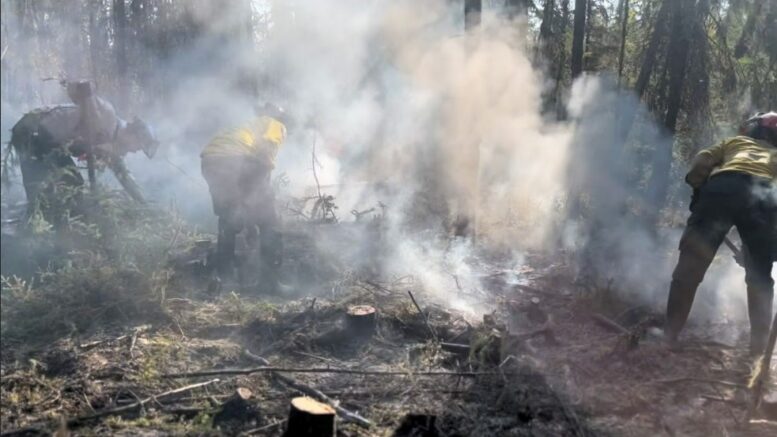The territorial government has updated the NWT Emergency Plan, following some heated criticism following last year’s devastating wildfires.
The 70-page plan explains who has the power to do what, and in general terms what various community governments do, and what the GNWT is expected to do, when a disaster strikes of any form,
The GNWT stated the new wording should, “provide clarity and more fully articulate roles and responsibilities.”
Municipal and Community Affairs Minister (MACA) Vince McKay stated lessons have been learned from past experiences, including the years of spring flooding in the South Slave and Dehcho regions, and ongoing changes to the climate.
The minister stated: “I want to be clear that no changes were made to the roles and responsibilities of the GNWT or community governments, and that the updated plan remains consistent with the current powers and authorities outlined in the Emergency Management Act.
“Instead, updates are intended to clarify these roles and how partners can support during emergency preparation, response, and recovery.
“That is why it is so critical that all of us – individuals, businesses, communities, and governments – take action to prepare for disasters should they occur. Knowing our risks and preparing for them will help us navigate potential emergencies, and the GNWT will be there to help residents and communities prepare, respond, and recover.”
The past winter produced below-average moisture in the southern half of the territory and the forecast there has little rain ahead of 2024’s fire season.
The GNWT faced criticism last summer when it appeared to be caught flat-footed when the call was made to evacuate the capital. There was also confusion as to the roles to be played by the city and GNWT.
The cleaned-up plan also:
- Clarifies roles and responsibilities for local authorities as lead for emergency management and response coordination, as well as how Indigenous governments, non-government organizations, and the GNWT can support them;
- Clarifies GNWT department and agency specific roles and responsibilities in supporting community governments when their capacity has been exceeded;
- More clarity as to what response and hosting costs community governments can seek GNWT reimbursement for in the event the Disaster Assistance Policy is applied to a disaster event; and
- The Emergency Communications Protocol now outlines tactics to communicate emergency related information to the public.
Communities in the NWT also have their own local emergency plans, with Hay River, for example, just releasing its own updated document.
The updated Plan incorporates recommendations from the 2021 Flood After Action Review, lessons learned from the 2021 and 2022 flood seasons, and opportunities for improvement identified through the 2023 wildfire season.
The plan also promotes individual responsibility, stating residents should have a household emergency plan, an emergency kit, and insurance for private structures and businesses where available.
The updated plan has also been shared with the Council of Leaders and the Northwest Territories Association of Communities.

Hay River/ K’átł’odeeche/Kakisa/Enterprise fire in September, 2023. (Photo courtesy GNWT/NWT Fire)





